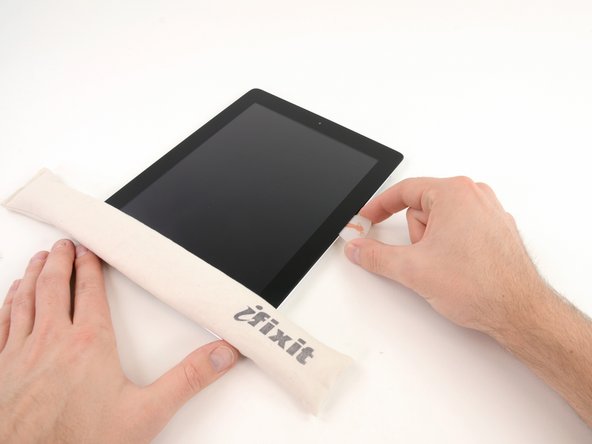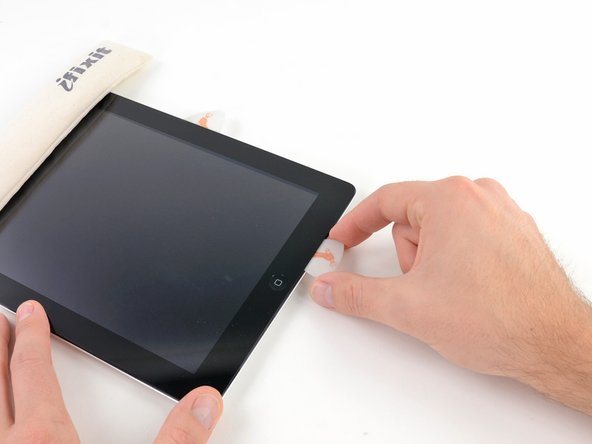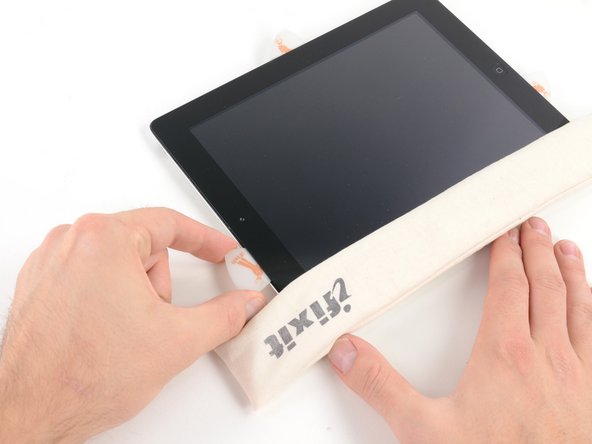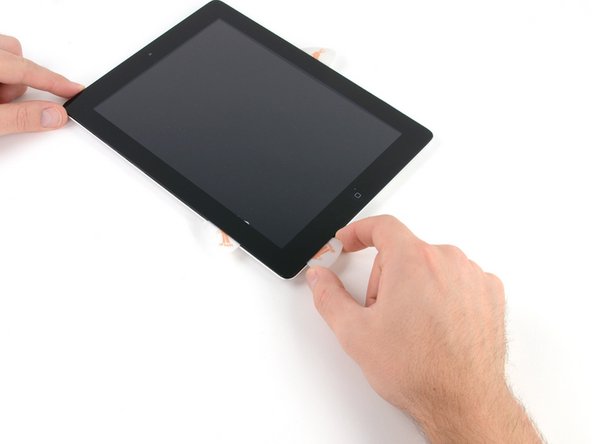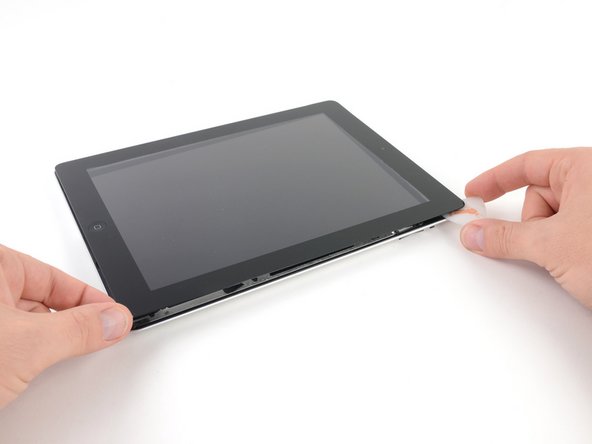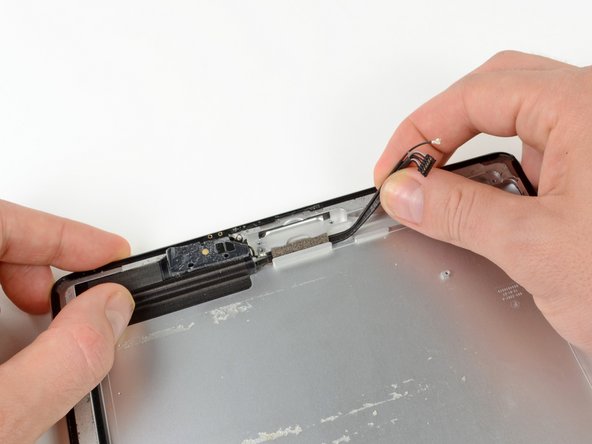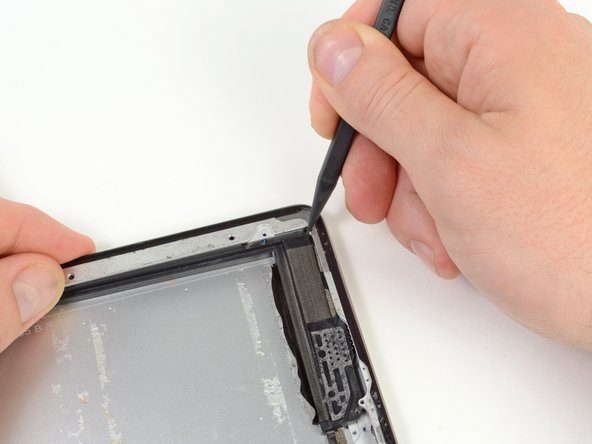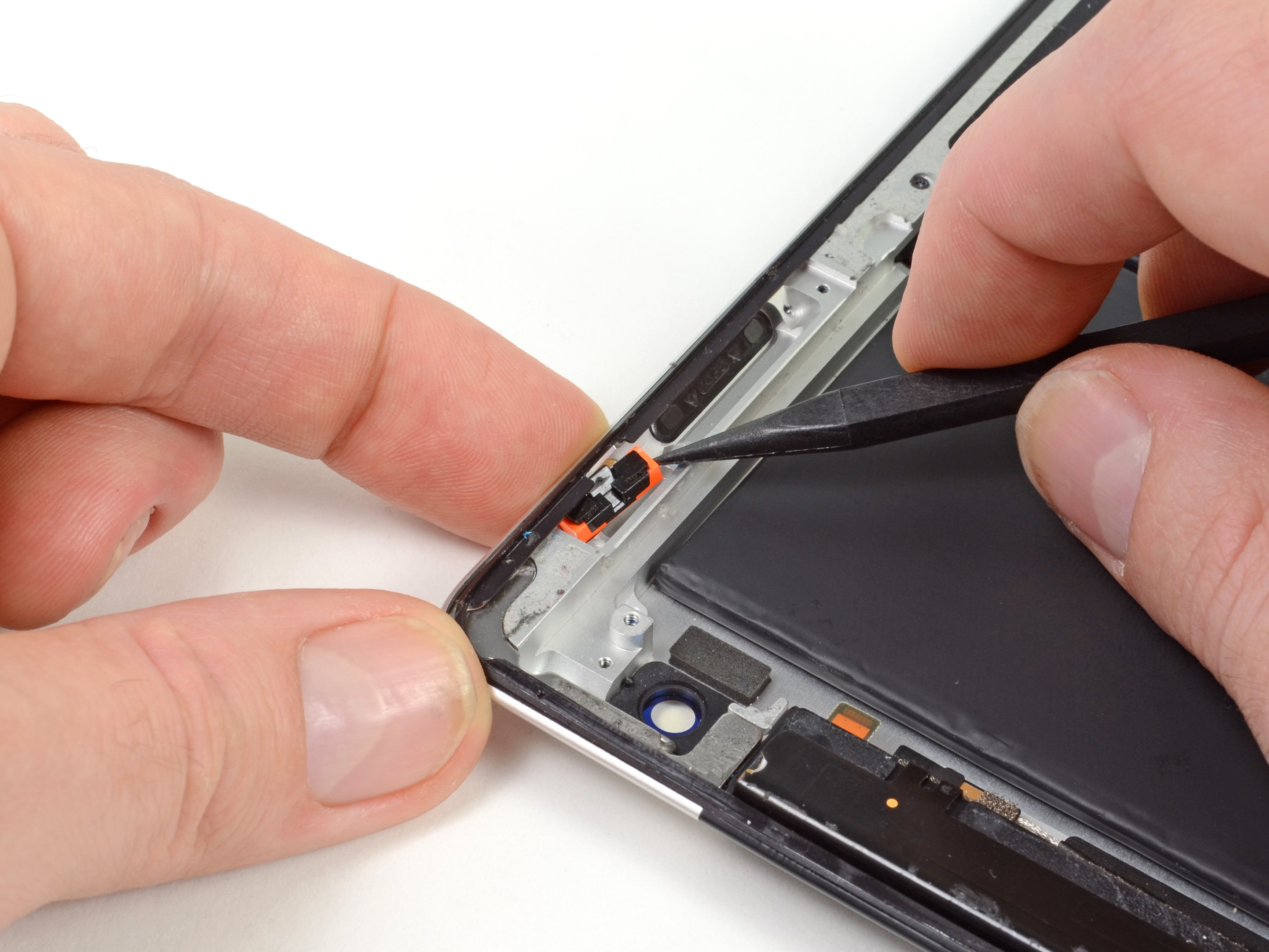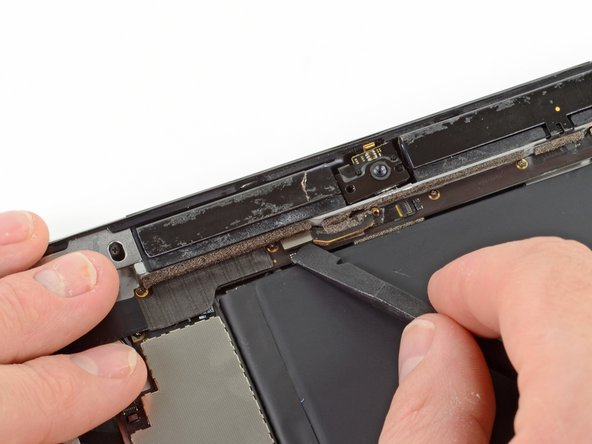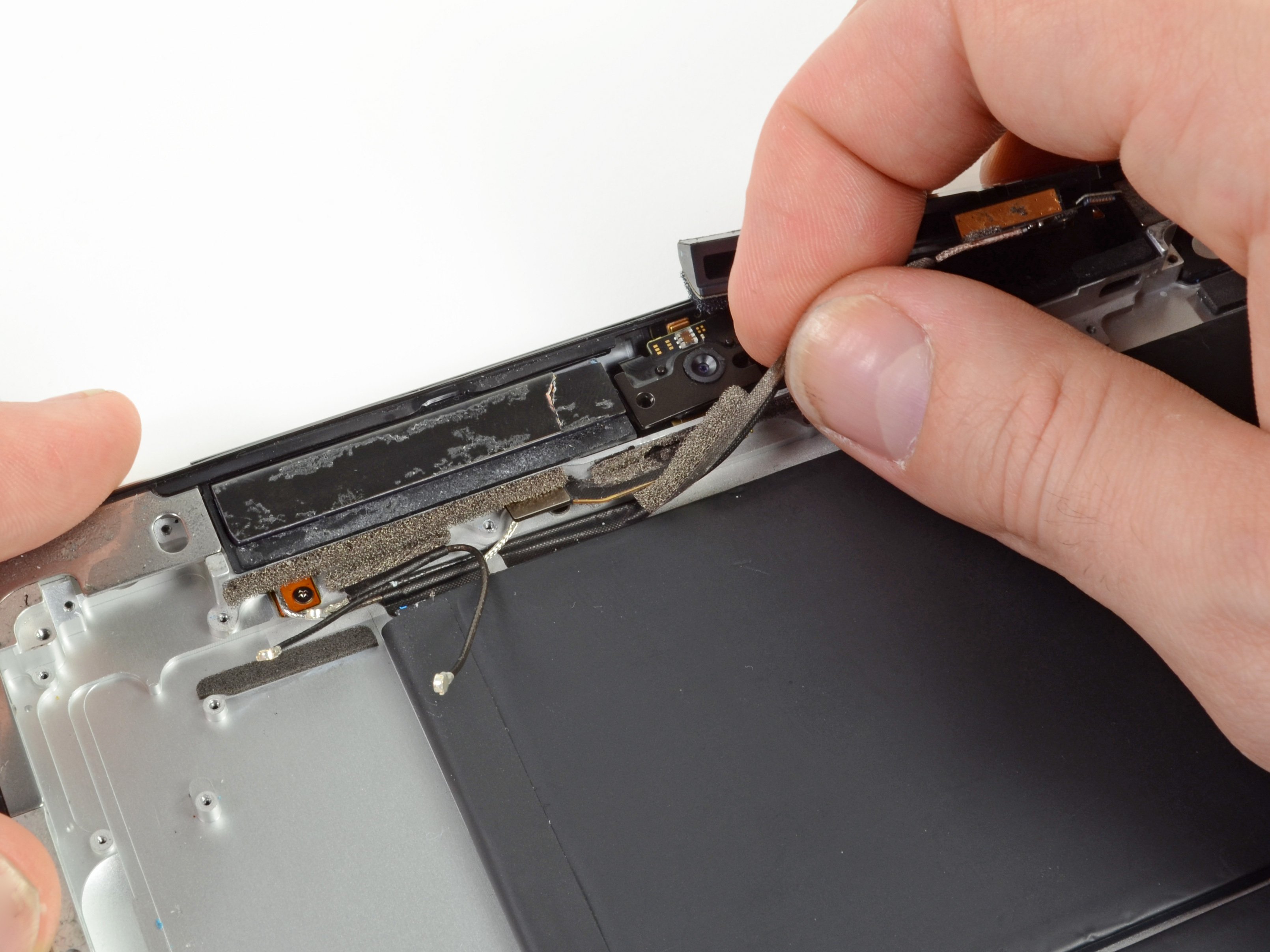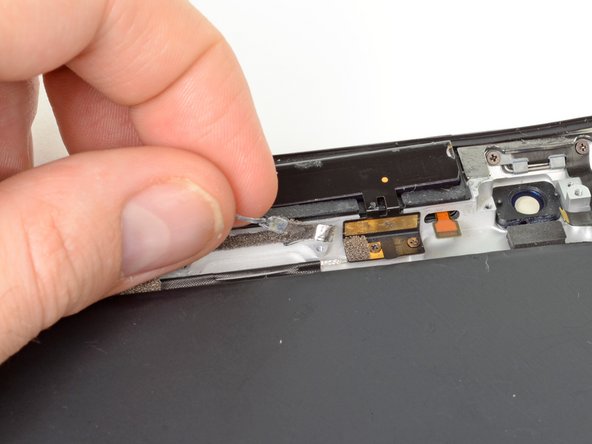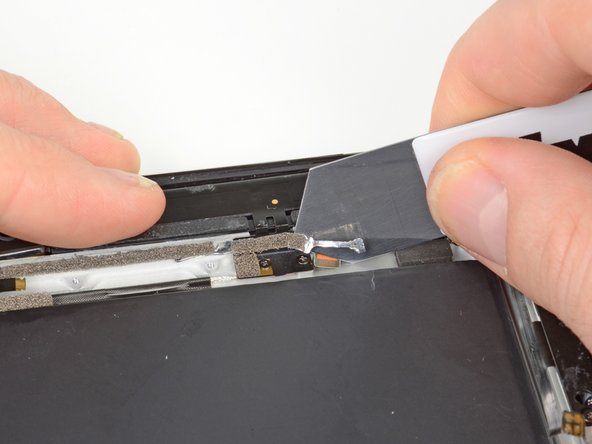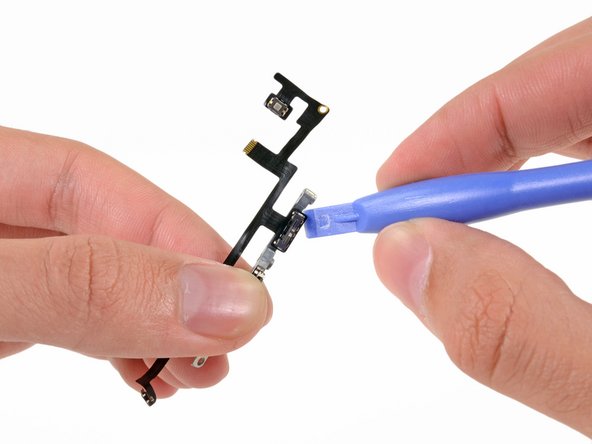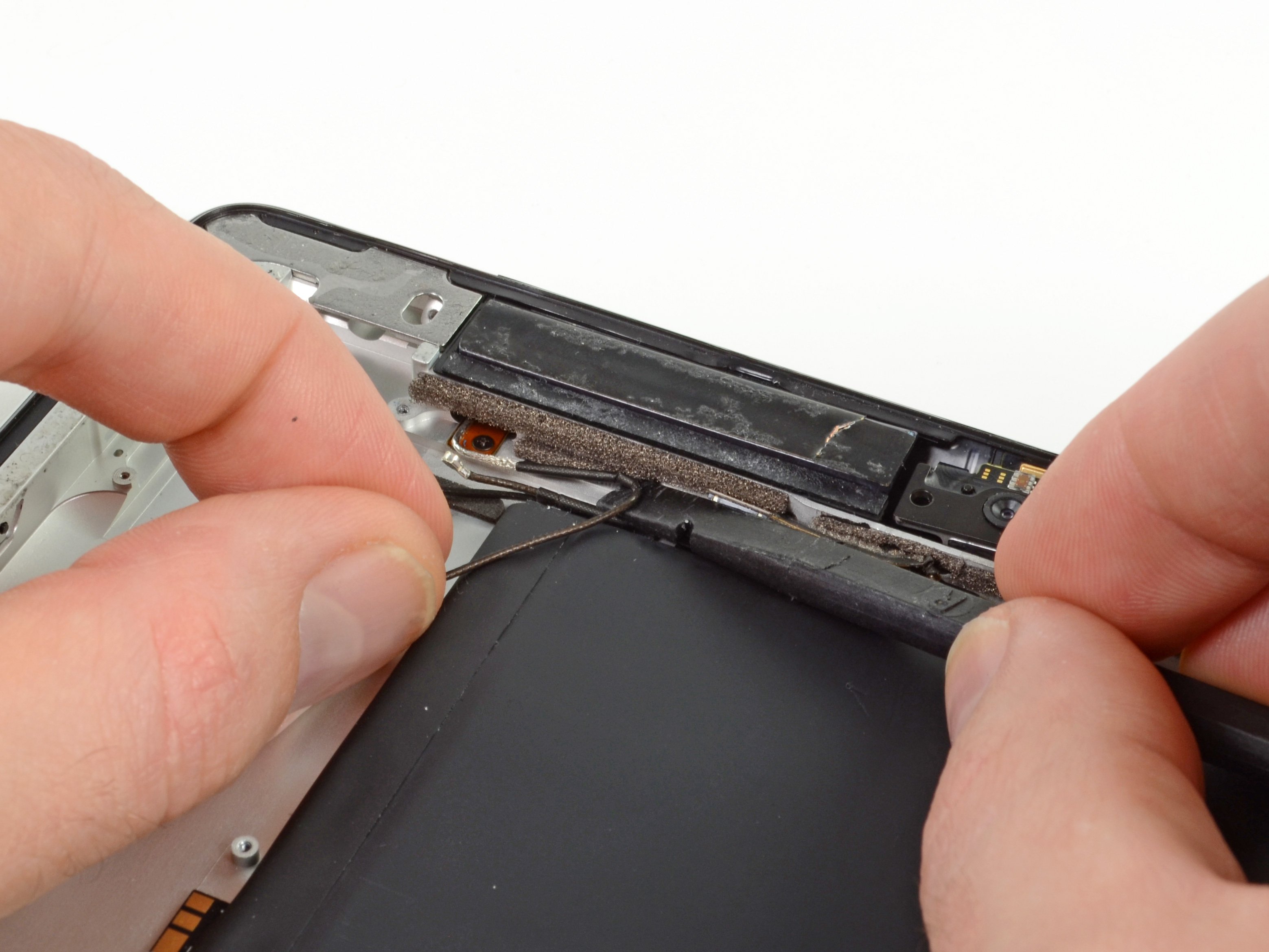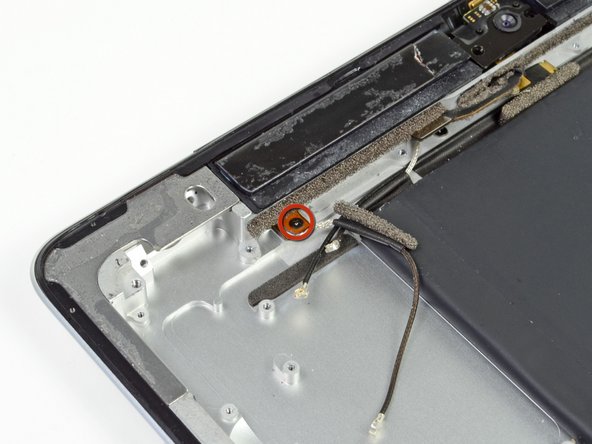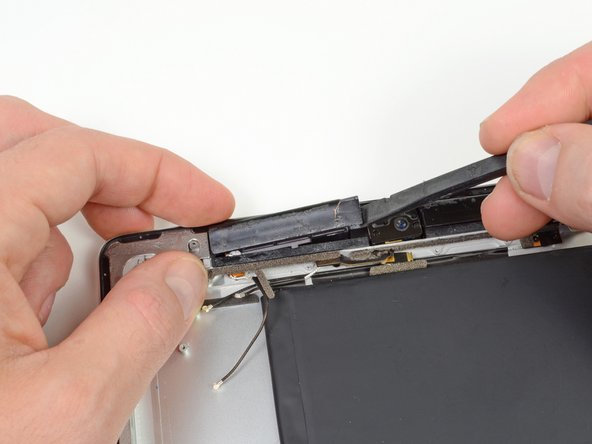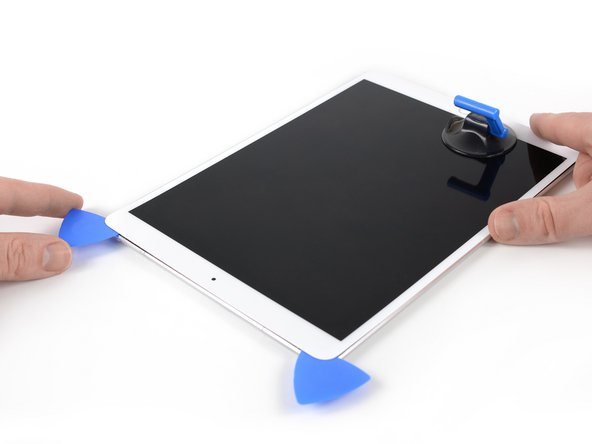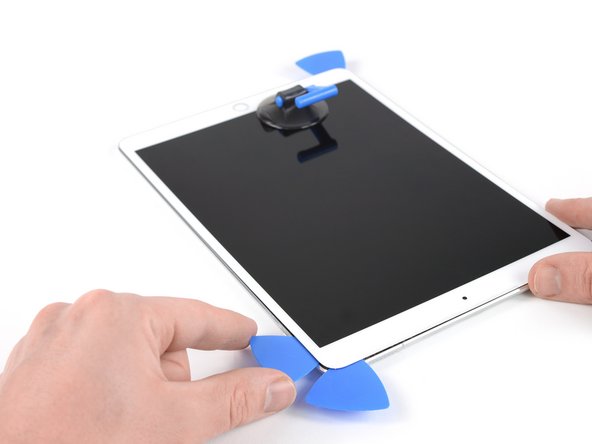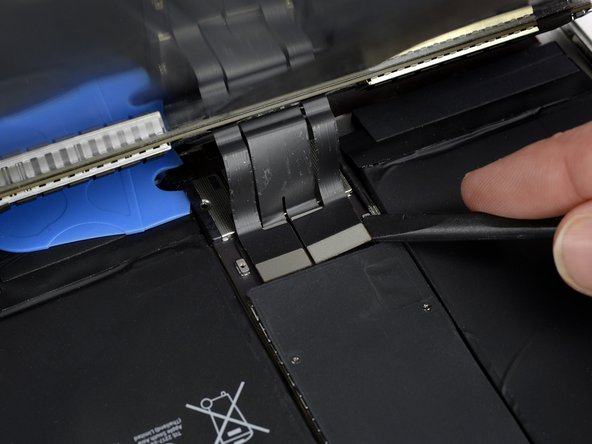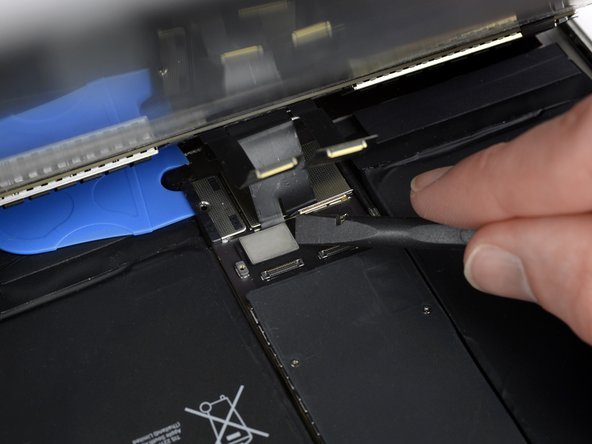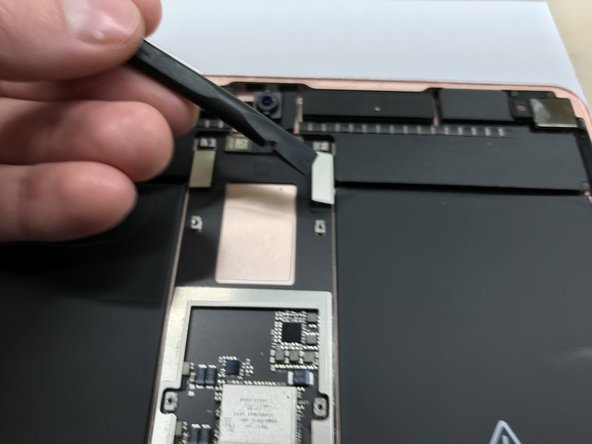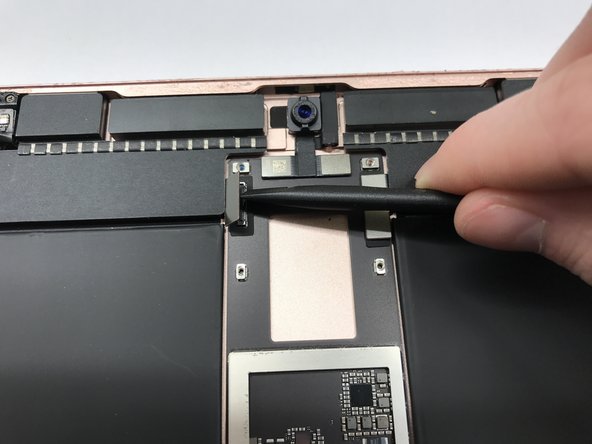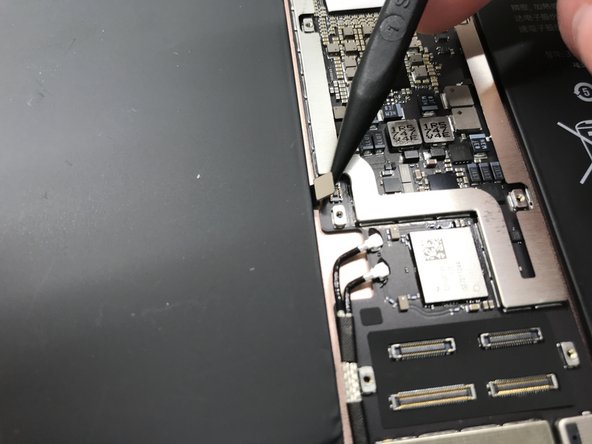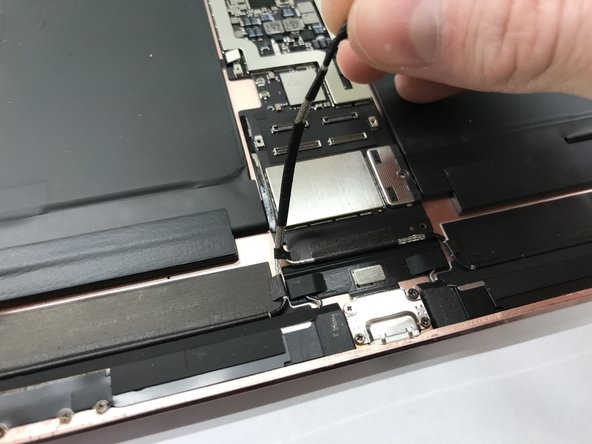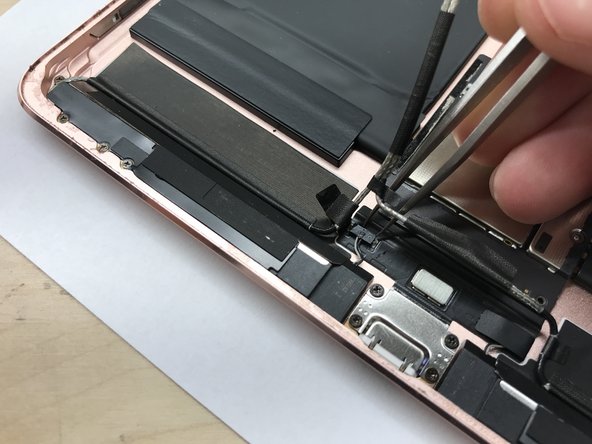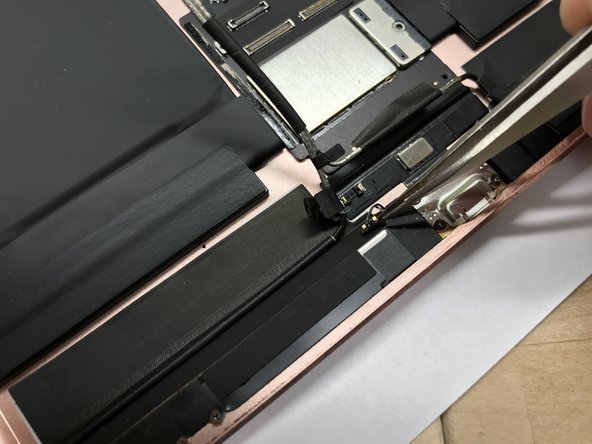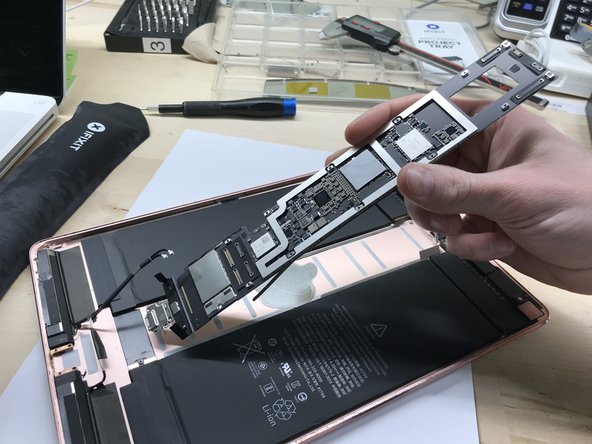Duration: 45 minutes
Steps: 65 Steps
Oh, what’s that noise? I think it’s time to give my iPad speaker a little TLC. No worries, though – I’ll swap it out using this simple guide. Let’s get to work and make this sound crystal clear again!
Step 1
For carousel microwaves: Ensure that the plate can spin freely. If your iOpener gets caught, it might overheat and cause a little burn action. Let’s keep things cool and running smoothly!
Before you start, give your microwave a quick wipe down—any leftover mess at the bottom could make your iOpener a little too sticky for comfort.
– Pop the iOpener right in the middle of the microwave.
Tools Used
Step 2
Hey there! Just a friendly reminder to keep an eye on the temperature of your iOpener during the repair. If it gets too hot, it could go pop! So, let’s keep it below 100˚C (212˚F), alright?
If your iOpener looks like it’s been working out and is swollen, steer clear of it!
Still feeling the heat in the middle? No worries! Keep using it while it cools down a bit before you give it another heat-up. A well-heated iOpener should stay nice and toasty for about 10 minutes!
Microwaves vary in power, so adjust the heating time accordingly. Your iOpener is ready to roll when it’s just a tad too warm to keep your fingers on it comfortably.
– Pop the iOpener in the microwave for about thirty seconds to get it nice and toasty.
– As you work through the repair, if the iOpener starts to cool down, just give it another quick thirty-second zap to keep things warm and easy.
Tools Used
Step 3
Heads up! The iOpener gets seriously hot—handle with care and grab an oven mitt if you want to keep your fingers happy.
– Carefully take the iOpener out of the microwave, grabbing one of the two flat ends so you don’t burn your fingers on the hot middle part.
Tools Used
Step 4
Be careful with that iOpener! It’s going to be pretty hot, so make sure to grab it by the end tabs only.
No microwave? No problem! Just heat your iOpener by soaking it in boiling water instead.
– Start by filling a pot or pan with enough water to completely submerge your iOpener.
– Heat up that water until it’s boiling, then go ahead and turn off the heat. You don’t need it bubbling away any longer.
– Place the iOpener gently into the hot water for about 2-3 minutes, making sure it’s fully submerged in the water.
– Carefully use tongs to pull the heated iOpener out of the water. Watch out, it’s going to be hot!
– Dry the iOpener thoroughly with a towel so it’s nice and ready for the job.
– All set! Your iOpener is good to go. If it cools down too much, just heat up the water again, turn off the heat, and dip the iOpener for another 2-3 minutes.
Tools Used
Step 5
Put on those safety glasses to protect those peepers, and keep your focus—no accidental LCD screen mishaps!
This will keep those glass shards in check and maintain the structural integrity while you carefully pry and lift the display. You’ve got this!
– If your display glass has taken a hit and is cracked, let’s keep things safe and sound! Grab some packing tape and cover that glass up to prevent any further mishaps while you work your magic.
– Lay down some overlapping strips of clear packing tape across the iPad’s display until it’s fully covered. Think of it as giving your device a protective shield!
– Now, just follow the rest of the guide as best as you can. Just a heads up: once the glass starts cracking, it might keep on doing its thing while you’re working. You might want to grab a metal prying tool to help scoop out those pesky glass pieces.
Step 6
Heads up! Since you might be handling some cracked glass here, we definitely suggest popping on some safety glasses to keep those sneaky shards from making a surprise appearance in your eye.
– Place the iOpener flat against the right edge of your iPad, making sure it’s nice and snug for optimal contact. We want that heat to do its magic!
– Give it a moment to chill—about 90 seconds should do the trick—before you dive in and tackle that front panel.
Tools Used
Step 7
Getting that little wedged tip of the opening tool in between the glass and plastic might take a bit of elbow grease. Take your time and be gentle, giving the plastic opening tool a little wiggle back and forth as needed.
– There’s a tiny gap in the iPad’s adhesive ring at the upper right corner, about 2.0 inches (~5 cm) down from the top edge. This little opening is your entry point.
– Line up your tool with the mute button. Gently slip the tip of a plastic opening tool into the crack between the front glass and the plastic bezel. Just ease the tip in just enough to start widening that gap.
Step 8
– Position the tool carefully between the plastic bezel and the front panel glass. It should slide in smoothly—no force needed here!
Step 9
– With the tip of your trusty plastic opening tool snugly placed between the front glass and the plastic bezel, it’s time to slide in a plastic opening pick right beside it, making sure to fill that little gap like a pro!
Step 10
– Take that trusty plastic opening tool out of the iPad, and gently slide the opening pick underneath the front glass, pushing it in about half an inch. You’re doing great!
Step 11
– While you’re working on gently peeling off the adhesive from the right side of your iPad, go ahead and reheat the iOpener. Once it’s nice and warm, place it on the bottom edge of the iPad to keep things smooth and easy.
Tools Used
Step 12
The adhesive is super strong, so you might need to use a bit of elbow grease. Take your time and proceed carefully!
If you can spot the tip of the opening pick sneaking beneath the front glass, give it a gentle tug. Don’t worry, using the pick this far down won’t cause any harm, but it might leave a bit of adhesive residue on your LCD. Just keep that in mind as you dive into your repair adventure!
– As the iOpener warms up the bottom edge, start loosening the adhesive along the right side of your iPad.
– Gently slide your opening pick down the edge, carefully freeing the adhesive bit by bit.
Tools Used
Step 13
If the adhesive is being stubborn, you might need to slide the heated iOpener back onto the right edge of the iPad to warm things up again. How much you need to move it depends on how long the iPad has cooled while you were working your magic.
– If your opening pick gets caught in the adhesive, try gently ‘rolling’ it along the edge of the iPad to keep peeling that sticky stuff away.
Tools Used
Step 14
– Before you whip out that first opening pick from the bottom corner of the iPad, slide a second pick right under the right edge of the front glass. This little buddy will help keep the adhesive from getting too cozy and re-sticking.
– Give that iOpener a little reheat love and then place it on the top edge of the iPad. You’re doing great!
Tools Used
Step 15
The Wi-Fi antenna is snugly anchored to the bottom right corner of the rear case of your iPad with screws and a cable. It’s super important to handle this part with care—otherwise, you might accidentally cause some permanent damage to that delicate Wi-Fi antenna. So, let’s keep it cool and proceed with caution!
– Alright, friends! We’re diving into some careful steps ahead, so let’s keep our eyes peeled.
– You’ll be gently releasing the adhesive that’s keeping the antenna snug against the front panel. Just take your time and avoid any mishaps with the delicate bits connecting the antenna to the bottom of the iPad. Follow along closely, and you’ll do great!
Step 16
Heads up! Don’t slide the pick past the bottom right corner — you might accidentally mess up the Wi-Fi antenna, and we definitely don’t want that.
– Gently glide the opening pick around the bottom right corner of your iPad, peeling away that adhesive like a pro.
Step 17
Carefully slide the opening pick along the bottom right edge of the front panel. Watch out— the Wi-Fi antenna hangs out close to the corner and can get nicked if the adhesive isn’t released just right.
Keep the pick just a tiny bit tucked under the front glass—don’t pull it all the way out! Aim to leave about 1/8″ (3 mm) of the tip sneaking underneath.
– Gently slide the tip of your opening pick along the bottom edge of the iPad to carefully loosen the adhesive holding down the Wi-Fi antenna.
Step 18
– Alright, let’s get rolling! Once you’ve navigated past the Wi-Fi antenna (about 3 inches from the right edge, right next to the home button), it’s time to reinsert that trusty opening pick all the way in.
– Now, give that pick a little slide to the right! This will release the adhesive that’s been keeping the Wi-Fi antenna cozy with the front glass.
– Remember, the antenna is securely attached to the bottom of your iPad with screws and a cable. This step is all about detaching the antenna from the front panel, so when you remove the panel, you won’t have to worry about damaging your antenna. You’ve got this!
Step 19
Keep the iOpener heating sessions to under a minute each, and be sure to chill out for at least two minutes before giving it another go.
If the adhesive along the bottom edge has cooled off too much, give your iOpener another quick warm-up to soften things right where you’re working.
– Keep sliding that opening pick along the bottom edge of the iPad, carefully pulling it out enough to loop around the home button, then tuck it back in about half an inch (10 mm) past the button.
Tools Used
Step 20
When working on iPad 4 models, slide your pick in no deeper than 1/2 inch (10 mm) here to keep that home button ribbon cable safe and sound.
– Keep peeling away that stubborn adhesive along the bottom edge of the iPad like a pro!
– Now, slide the opening pick gently under the front glass near the home button and let it chill there.
Step 21
– Warm up the iOpener in the microwave, then place it on the left edge of the iPad to get that adhesive nice and toasty in that area.
Tools Used
Step 22
If the adhesive has cooled off too much, just pop the iOpener back along the top edge and keep going. And if the iOpener itself has gotten chilly, give it a quick reheat to bring it back to life.
– Gently glide that opening pick along the top edge of your iPad, giving it a little tug to navigate around the front-facing camera bracket.
– The adhesive in this area is no joke – it’s thick! So, take your time and apply some muscle, but be careful not to slip and cause any harm to yourself or your iPad.
– If your opening pick seems to be stuck in the adhesive, try giving it a little roll, just like we showed you in step 9.
Tools Used
Step 23
If the adhesive is nice and toasty, go ahead and take the iOpener off the iPad to make things easier. But if it’s still pretty sticky, just give the iOpener a little more heat and rest it on the left edge while you get to work.
– Carefully peel off the adhesive along the top edge of the iPad, then gently slide the opening pick around the top left corner.
Tools Used
Step 24
The digitizer cable is hiding about 2″ (50 mm) up from the bottom of your iPad. So, when you’re sliding that pick, take a little pause when you reach around 2.25″ (60 mm) from the bottom. You’ve got this!
– Gently slide the opening pick along the left edge of the iPad to loosen the adhesive bit by bit. Heads up: the adhesive is super thin here because of the digitizer running the whole left side. Keep the pick shallow (no deeper than 10 mm or about 1/2 inch) to avoid giving the digitizer an accidental poke.
Step 25
Heads up! The bottom of the digitizer cable is just about 1″ (25 mm) from the iPad’s bottom edge. Take it slow and steady to avoid cutting this little guy.
– Still got the opening pick tucked under the iPad’s bottom edge? Great! Now, gently work it to break free the adhesive along the bottom left corner.
Step 26
Some of the adhesive around the edge of the iPad might have decided to stick back down. If that’s the case, carefully slide a pick under the area where the front glass is still hanging on and gently “cut” through the adhesive to free it.
– With one of your opening picks, gently lift the bottom right corner of the iPad and give it a little tug with your fingers to get it started.
Step 27
Watch out for any sticky adhesive that might still be clinging on, and grab an opening pick to slice through any glue that’s keeping that front panel in place.
– Grab your iPad by the top and bottom right corners, then gently twist the front glass away from the device. Nice and easy, no rush!
– When you’re putting everything back together, make sure to wipe the LCD with a microfiber cloth and give it a quick blast of compressed air to clear off any pesky dust or fingerprints before you reinstall the glass. A clean screen always looks better!
Step 28
– Take a moment to locate those four tiny 2 mm Phillips #00 screws that are keeping the LCD snug against the aluminum frame. Once you’ve found them, gently remove each one with your trusty screwdriver. You’ve got this!
Step 29
Handle the LCD with care! That ribbon cable is delicate and could snap if you bend it too much. Keep it cool and take your time!
– Grab your trusty plastic opening tool or spudger and gently pop the right edge of the LCD away from the iPad. You’ve got this!
– Now, swing the LCD around on its left edge and let it rest comfortably on the front panel like it’s taking a well-deserved break.
Tools Used
Step 30
– Take the spudger and gently lift the tape covering the LCD ribbon cable connector. Be careful not to rush—it’s a delicate step, but you’ve got this!
Tools Used
Step 31
– Lift up the little flap on the LCD ribbon cable ZIF connector with a gentle touch.
– Now, grab the LCD ribbon cable (fingers or tweezers will do the trick) and carefully pull it out of the socket on the logic board.
– If the LCD screen refuses to light up after connecting the ZIF connector, try giving your iPad a force restart. Hold down the power and home buttons together for at least 10 seconds until the Apple logo appears, and voilà!
Step 32
– Gently lift the LCD off the front panel, making sure not to touch the screen directly. Take it slow, and you’re one step closer to a smooth repair!
Step 33
– Grab your spudger and gently lift the piece of tape holding the touchscreen ribbon cable in place on the logic board. Take your time and peel it back carefully.
Tools Used
Step 34
– Gently lift the retaining flap on both of the ZIF connectors for the touchscreen ribbon cable. You’ve got this!
Step 35
– Gently slide the flat end of a spudger under the digitizer ribbon cable to carefully pry up the adhesive holding it in place.
– Firmly and steadily pull the digitizer ribbon cable straight out from its connectors on the logic board.
Tools Used
Step 36
– Gently peel back the touchscreen ribbon cable, then grab the flat end of your spudger to carefully lift off the adhesive holding the cable to the back of the aluminum case. Take your time—this part is all about finesse!
Tools Used
Step 37
– With a gentle tug from your fingertips, ease the touchscreen ribbon cable out of its cozy spot in the aluminum frame.
– Carefully lift off the front panel of the iPad, like unwrapping a present!
Step 38
If you see any, gently peel away the electrical tape covering the Wi-Fi antenna, speaker cable, and dock connector cable. Easy does it!
Step 39
Be sure to pry under the connector, not the socket itself! Going for the socket could lead to some serious damage—so take it easy and be gentle!
– Time to free your device! Gently unplug these connectors from their cozy homes on the logic board:
– Wi-Fi antenna cable
– Speaker connector cable.
– Dock connector cable.
Step 40
– Carefully peel back the electrical tape that’s been keeping your headphone jack assembly cable connector snug and cozy. It’s time for it to shine!
– Grab your trusty spudger and gently lift the retaining flap on both ZIF connectors that are holding the headphone jack cable to the logic board. You’ve got this!
Tools Used
Step 41
– Gently slide the flat end of a spudger under the headphone jack assembly cable, carefully freeing it from the adhesive that holds it to the aluminum back panel.
– Now, give that headphone jack assembly cable a straight pull to release it from its cozy spot on the logic board.
Tools Used
Step 42
– Carefully peel off the tape that’s keeping the SIM board cable ZIF connector snug as a bug.
– Gently flip up the little retaining flap on the SIM board cable ZIF connector.
– With your trusty spudger, give the SIM board cable a straight pull to free it from its cozy home on the logic board.
Tools Used
Step 43
One of those sneaky screws, located at the top of the logic board, is hiding under the headphone jack assembly cable. Make sure to gently hold the cable to the side while you tackle the removal and replacement of this little guy.
– Grab your screwdriver and remove the seven screws holding the logic board to the rear aluminum panel.
– Six 2.1mm Phillips #00 screws
– One 2.5mm Phillips #00 screw
Step 44
– Grip the logic board by the edge closest to the dock connector, then gently slide it down toward the bottom of the iPad.
Step 45
– Carefully flip the logic board over, keeping an eye out for any cables that might get in the way.
– Use the tip of a spudger to gently pop the three antenna connectors off their sockets on the logic board.
Tools Used
Step 46
Handle the battery with care as you take it out of the iPad—don’t poke or damage it! Batteries are packed with chemicals that aren’t great for your health if they leak or get inhaled.
Time to get that battery free! Gently peel away the adhesive, two inches at a time. This keeps things smooth and easy on your battery, without putting any extra strain on it. Patience is key!
– The battery is stuck on there pretty good, thanks to a hefty dose of strong adhesive bonding it to the aluminum frame.
Step 47
The adhesive is tough and holds on tight. It’s going to take some muscle to loosen it up, so take your time and stay steady. Just be sure the metal spudger doesn’t slip—slow and careful wins the race!
– Gently slide the flat edge of a metal spudger under the battery at the bottom of your iPad.
– Carefully glide the metal spudger about 1.5 inches beneath the battery to loosen the adhesive.
Tools Used
Step 48
– Just like we did before, gently slide that spudger about 2 inches under the other adhesive strips. You’ve got this!
Tools Used
Step 49
– Gently slide the metal spudger under the battery connector to loosen the adhesive that’s keeping it snug as a bug in a rug.
Tools Used
Step 50
– Keep peeling away that adhesive at the top of the battery like a boss!
Step 51
Slide the spudger in nice and flat under the battery, hugging the rear case to keep that battery happy and avoid any unwanted bends.
– Picking up right where you left off, slide that trusty metal spudger in about two more inches under the battery. You’re doing great!
– Now, just keep that momentum going and repeat this for the rest of those adhesive strips. You’ve got this!
Tools Used
Step 52
– Keep at it! Just like before, gently work your way along and loosen the adhesive strips to about a 4-inch depth. You’ve got this!
Step 53
– For the final pass, slide the metal spudger all the way to the right edge of your iPad. Nice and smooth!
– Keep at it, and do the same for all the adhesive strips. You’ve got this!
Tools Used
Step 54
Grab your trusty metal spudger and gently work it around the edges to free the battery from any leftover adhesive that’s still holding it down.
– First, double-check that all the adhesive glue has given up its grip on the battery.
– Now, gently lift the left side of the battery, tilting it towards the right side of the iPad. Take your time here!
– Carefully remove the battery from the iPad, and you’re one step closer to a successful repair.
Tools Used
Step 55
– Gently use the flat end of the spudger to pop the plastic spacer loose from the aluminum frame.
– Lift the plastic spacer off the iPad and set it aside.
Tools Used
Step 56
– Unscrew the two 1.8 mm Phillips #00 screws that are keeping the dock connector snugly attached to the rear aluminum case. You’ve got this!
Step 57
– Grab your trusty spudger and gently lift the dock connector up. It’s like a little dance, so be smooth!
– Now, carefully remove the dock connector from the iPad. You’re almost there!
Tools Used
Step 58
– Time to get those screws off! Let’s start by unscrewing the ones holding the Wi-Fi antenna in place on the aluminum frame.
– Two 1.75 mm Phillips #00 (the small head ones) – ready? Go ahead and remove them.
– Next, grab the 4.15 mm Phillips #00 screw and get that one out too.
– Finally, don’t forget the 1.8 mm Phillips #00 screw with the wide head. One last twist!
Step 59
– Grab the flat end of your trusty spudger and gently work it under the foam adhesive that’s keeping the Wi-Fi antenna snugly attached to the speaker assembly. A little patience goes a long way!
Tools Used
Step 60
– Grab the Wi-Fi antenna and speaker cable firmly, like you’re holding onto the last piece of pizza.
– Gently but firmly pull those cables off the aluminum frame. No rush—just a smooth and careful move.
Step 61
– Unplug the speaker cable from the Wi-Fi antenna cable. They’re like two friends who need a little space!
– Gently detach the Wi-Fi cable from the iPad, making sure it’s a smooth separation.
Step 62
– Gently wedge the tip of a spudger under the adhesive tape that’s holding the speaker to the aluminum frame.
– Carefully slide the spudger beneath the tape to loosen up the sticky adhesive.
Tools Used
Step 63
– Loosen and take out the three 4.25 mm Phillips #00 screws holding the speaker onto the aluminum frame. Easy does it!
Step 64
– Grab your spudger and gently nudge the speaker assembly out from its snug spot in the aluminum frame. Easy does it!
Tools Used
Step 65
– To put your device back together, just work your way through these steps in reverse. Easy peasy! And if things get tricky, remember you can always schedule a repair with us.
Success!
























